Soho Walls Never Funded
In the 1970s, the not-for-profit City Walls gave grants to artists for transforming public spaces. My mother dreamed of being a famous muralist. This was before Soho was covered with ads ...
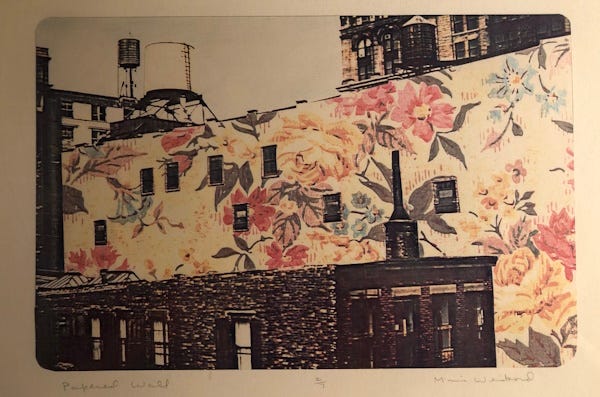
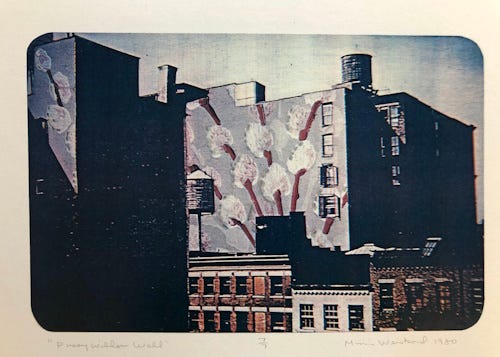
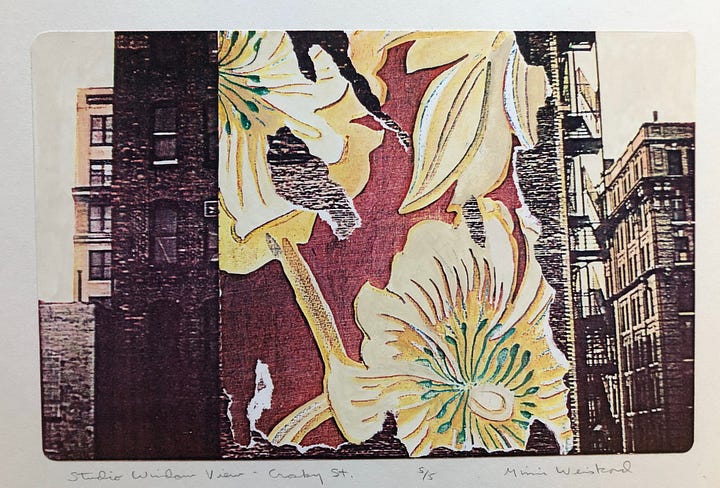
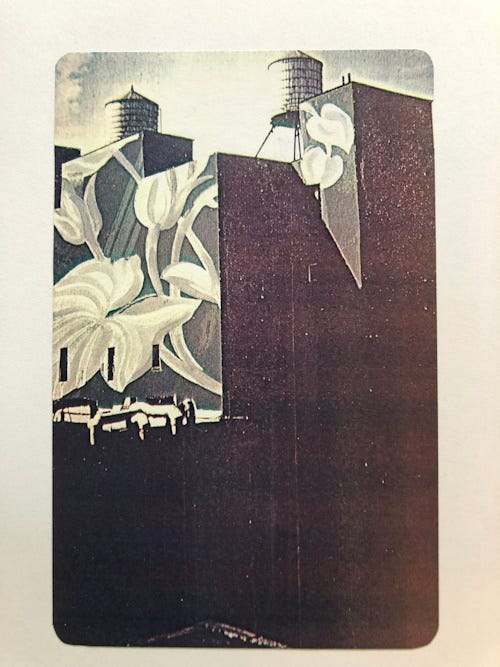
Above: my mother’s mocked-up mural proposals using emerging color Xerox technology.
Two Houses is a newsletter of stories about art, feminism, grief, and Time excavated from the Soho loft where I grew up. Posts are free and illustrated with the work of my long-divorced parents, the painters Mimi Weisbord and Lennart Anderson.
Soho was bleak when we first moved to a loft on Lafayette Street in the late 1970s. The retreating textile industry left behind large, raw, factory spaces attractive to artists forming building cooperatives. (Ours was “City Studios: Artists Living and Working.”) The mob ruled the neighborhood. (A card club was in our building.) Etan Patz went missing. Trash haulers went on strike, and my mother taught us to walk in the street at night to stay safe. Photos I’ve found since her death suggest she also walked around during the day gathering images of walls she might transform.
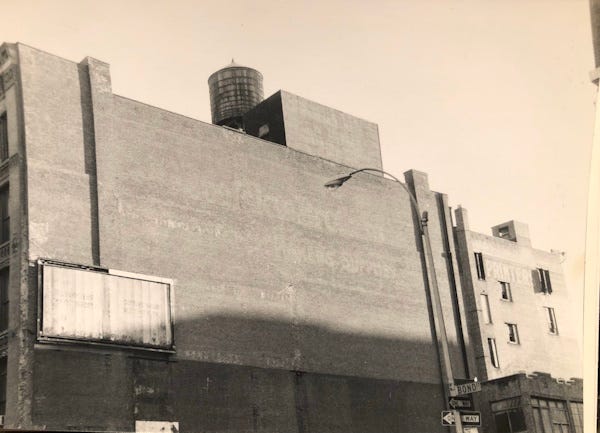
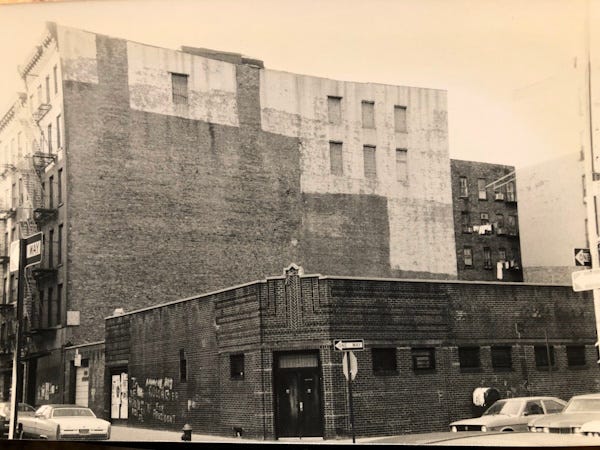
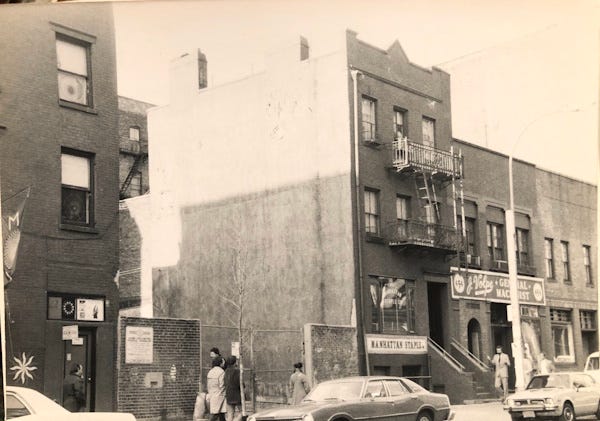
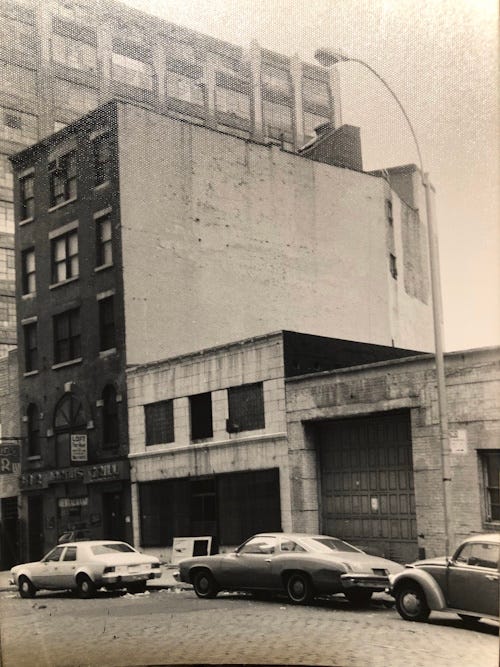
The photos were research for a grant opportunity with City Walls.
Working with artists and communities, City Walls was dedicated to revitalizing the visual environment of New York City through public art. Viewing the city as a work of art, the organization sponsored more than fifty murals by twenty-eight different artists. Early members and artists included Nassos Daphnis, Allan D’Arcangelo, Jason Crum, Mel Pekarsky, Tania, Robert Wiegand, and Todd Williams. Doris C. Freedman served as president of City Walls from 1971 to 1980.
– from the public art fund archive at the NYU Fales Library and Special Collections
At the time, my mother was obsessed with vintage wallpaper, textile, and linoleum designs. Her wall proposals explode details of wallpaper patterns, turning gritty streets floral and domestic interiors public/political. They embed a feminist message congruous with the era and her proclivity to delight and disrupt (is how I read them as one who suffered her complexities).
Sadly, these looming, blooming organic walls were never funded. And by the mid-’80s, Soho’s exteriors transformed with advertising, as they remain today. A wall a few doors from the loft has been rented by Gucci for years, and often it features misogynistic displays. As the pandemic eased its grip on the city, however, Gucci briefly surprised us with a mural that would have delighted my mother.
Because my mother did not design the patterns herself, her use of vintage wallpaper was criticized as a kind of plagiarism, reports her journal. (Yet, I think, what about pop art’s theft of things?) Her designs came from fragments salvaged from our colonial-era country house she’d sold to buy the loft.
Still, she had big plans. One journal entry records her ambitions:
I’m working up some black and white xeroxes of wall fragments for proposals – painted a couple with gouache. Met Stuart at Parsons reception and he said Sidney Lewis might like that. Wouldn’t it be fabulous if I got some wall commissions. In different cities?! In Europe?!! I am starting to see myself in a grander way. I tell students and others – you can’t get anything until you can fantasize yourself there.
April 4th, 1980
1980 was the year my parents were fighting in family court. They were battling over money and finally divorcing after eight years of separation. My mother’s relationship with the minimalist sculptor Fred Sandback was also ending. She was heartsick, bitter, broke, and ranting at us about our father’s lawyers. I’m grateful to learn of her ambitions. I imagine who she might have been had her walls been funded, the life we could have had together. When my mother was happy, she was generous, wry, funny.
These painted papered walls might have transformed Soho and also my mother.




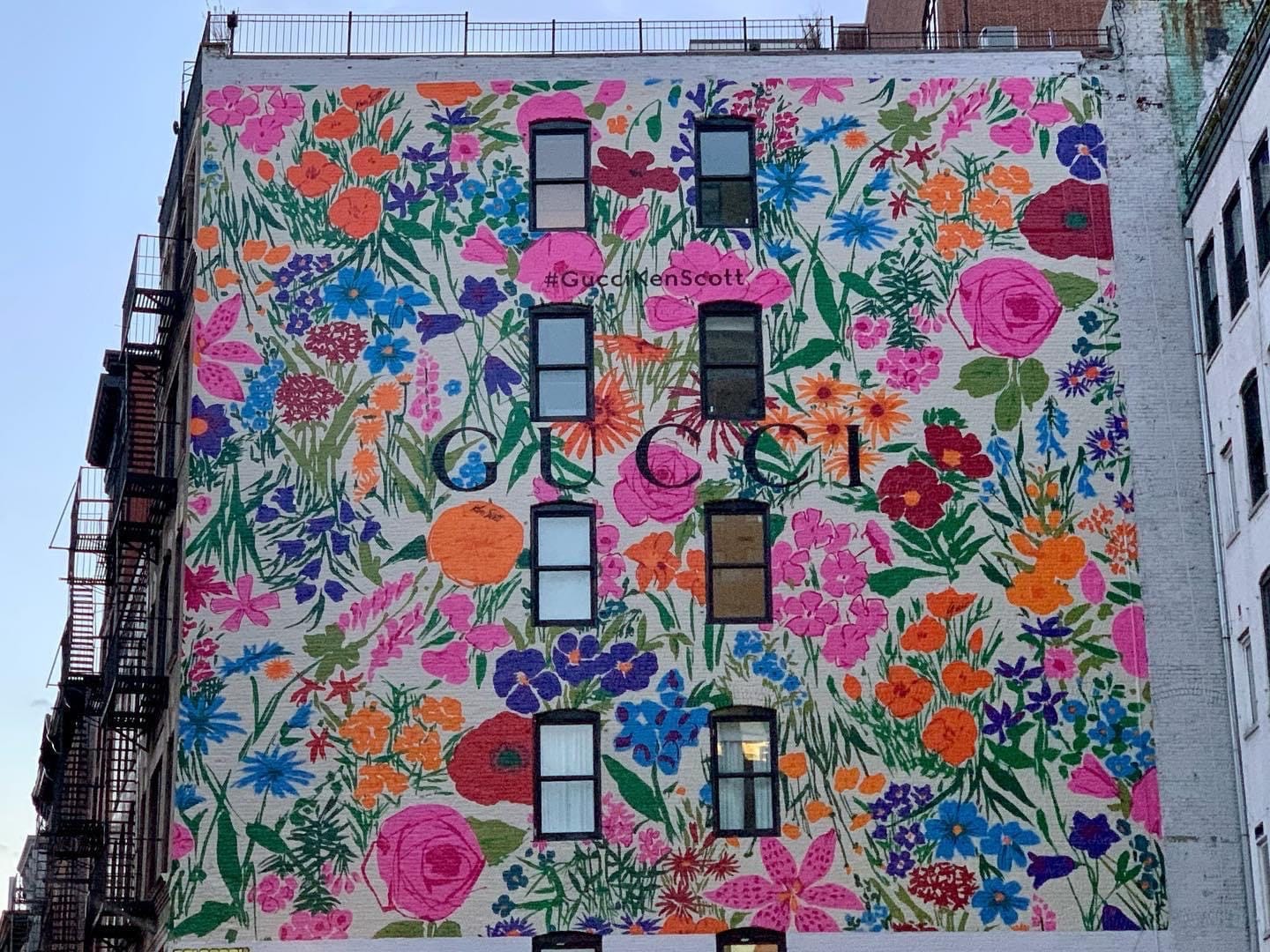
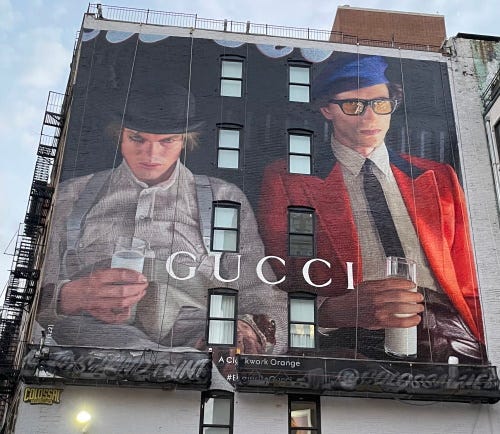
I do remember your mom being connected with a group of women warrior/artists/writers/poets.
Joan Larkin and Adrienne Rich….i wonder if she knew Claire Labine (Berkeley Place) Mary Ryan (plaza street). They were of that generation and created and wrote the soap opera Ryan’s Hope.
There were some fabulous women who mentored me in independence to whom i will be forever grateful
I so enjoyed your article. Thank you for posting these photographs. I have seen the film Clockwork Orange more than once - I thought it one of Kubrick’s most audacious and meaningful works because of all the important questions it raised. I started and stopped in my tracks when I saw that wall - WHAT was Gucci thinking? Did none of the powers that be see the film? Or are they following the current trend - anything to get and hold our attention. It does seem to be working.